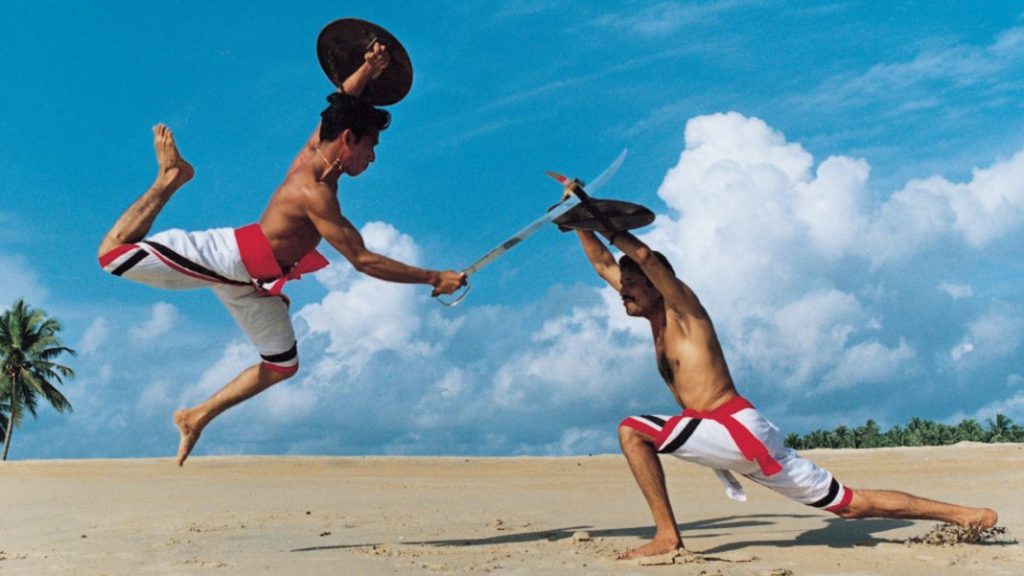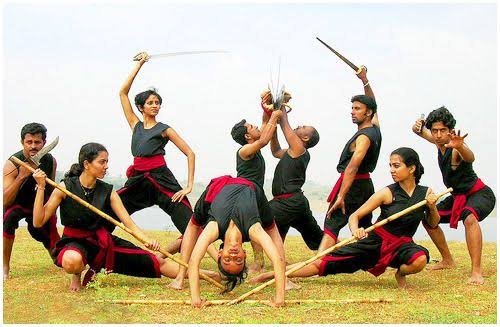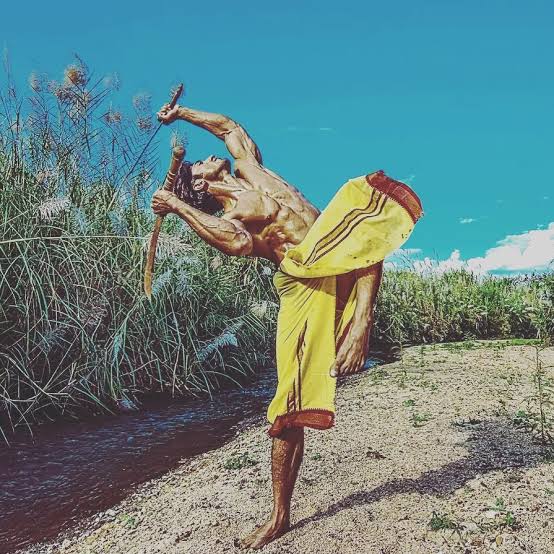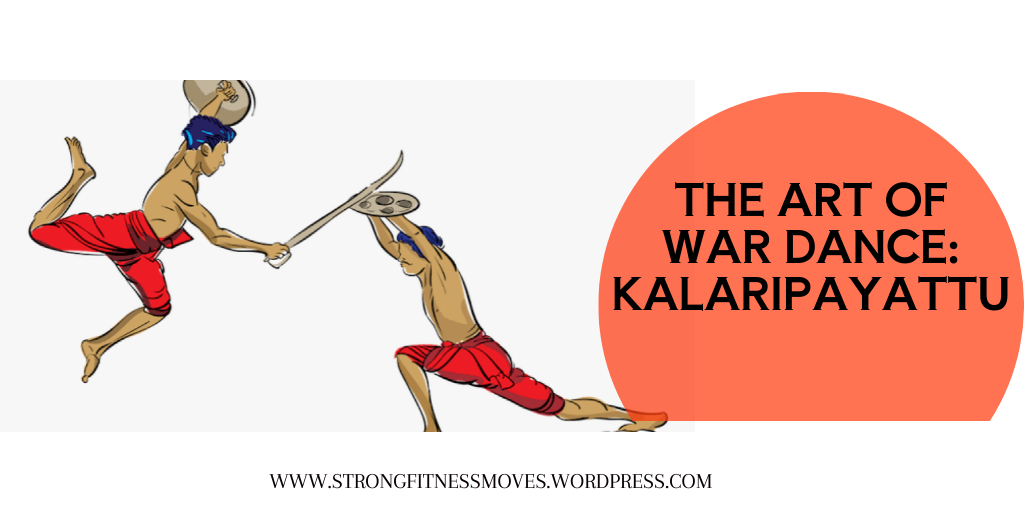
When the ancient tactics of combat are rediscovered and modified, it becomes a revival of a precious art form, popularly known as Kalaripayattu.
Before there were guns, tanks, and AI, men used to fight using the strength of their physical bodies. Kalaripayattu is one such Indian martial art form from the state of Kerala whose history goes back to the mythological age of 600 BCE–300 BCE. If we break down the word, Kalari means battlefield or a place of exercise, and Payattu means the act of fighting.
In this post, I will attempt to give you a short overview of how Kalaripayattu originated as a fighting style, developed into a syllabus by gurus, and is now included as an art and dance form.
POST CONTENTS
A short history of Kalaripayattu
Training techniques of Kalaripayattu
From war to dance
Disclaimer: All contents in this post are for general health information only. Please consult a specialist physician or a coach before trying any new exercise, diet or health advice. There are no affiliate links attached to this post.
A SHORT HISTORY OF KALARIPAYATTU

Many references to Kalari are mentioned in mythological texts like this one, which states that
“The saint Parshuram, the sixth incarnation of God Vishnu is said to be the founder of Kalaripayattu, who established 42 Kalaris and taught twenty-one masters of these Kalaris to protect the land of Kerala.”
The warrior class inhabitants of Kerala are said to have used kalaripayattu as a form of protection. However, historians dispute all of these assertions, focusing instead on the period’s rise to popularity during the 14th and 16th centuries.
During British colonial rule, Kalaripayattu was legally banned for fear of an uprising. However, Kalari again made a comeback in the 20th century thanks to its deep-rooted cultural significance and rituals.
The practice of Kalari follows the ancient ritualistic guru-shishya parampara (teacher-student tradition). In general, this tradition respects a well-defined structure of conduct in everything. From being extremely specific about the studio floor, the sequence during practice, the respect and devotion towards the teacher, following the strict schedule, the postures and techniques, etc. If all this seems similar to classical ballet, then you are absolutely right.
Unlike ballet, Kalari is less acrobatic and has a more warrior-like stance and aggression. Any dance form with deep-rooted historical and cultural significance follows the values established by the dance school. Since change is the only way to grow, Kalari also has many variations and was later modified.
TRAINING TECHNIQUES OF KALARIPAYATTU

Over the years, Kalari techniques were defined into a proper syllabus for future students. The training system of Kalaripayattu includes exercises to develop sharp reflexes for physical and skillful fighting with sticks, daggers, knives, spears, swords, shields, Urumi, etc.
“The Movements of Kalari are based on the mannerisms and fighting techniques of animals.”
There are two styles of Kalarippayattu: Vadakkan, or Northern Style, and Thekken, or Southern Style. With few differences and modifications, both styles have sharp, attacking postures and techniques.
There are four training stages in Kalari: body control exercises, practice with wooden weapons, practice with metal weapons, and bare-hand fighting technique. After completing all four stages, the student is eligible to learn and practice Kalari Chikitsa, or treatment with traditional medicines.
“The system of healing is based on the knowledge of Marmas (Vital spots) and body’s energy channels. The medicinal applications were mainly developed by Kalari Gurus in order to heal the injuries occurring while fighting.”
The healing of the injuries in Marma also improves flexibility and strength.
FROM WAR TO DANCE

The style of Kalaripayattu is unique and has influenced many folk and classical dance forms like Kathakali and Kolkali.
However, apart from acrobatics and athleticism, there are more reasons to call Kalaripayattu a dance form. Some of the mudras or finger movements replicate those of Nata dance, and postures imitate yoga.
In fact, as the popularity of Kalaripayattu increased, many women and even young children started their training to become strong. Now there are Kalaripayattu classes in many major states of India.
The discipline of Kalaripayattu has also attracted many students from America, the UK, and Australia. In the video posted below, you can see the head coach of Dutch Flow Academy, Harbert Harte Egberts, learning Kalaripayattu from 78 year old female teacher and his male disciple. You can find his inspiring martial arts videos on YouTube under the name of The Flowing Dutchman.
One of the best martial artists in India who has also impressed Jackie Chan with his moves is Indian actor Vidyut Jamwal. He regularly posts Kalari techniques that he practices and how they benefit the body as well as the mind.
References
What is Kalaripayattu
https://www.keralatourism.org/kalaripayattu/origin/introduction
About Kalaripayattu
https://kalaripayattuclass.com/about-kalaripayattu/
Kalaripayattu: An ancient Indian martial art form | Uncovering the Power & Grace of Kalaripayattu, By Swapneel Deshpande
Updated: February 20, 2023.
https://www.kreedon.com/kalaripayattu-an-ancient-indian-martial-art-form/

Indian dance forms are a testament to the country’s rich cultural heritage and diversity. From Indian dance forms are a testament to the country’s rich cultural heritage and diversity. From the ancient Natyashastra to the contemporary fusion styles, each dance form tells a unique story and reflects the essence of its region. These dances have not only survived the test of time but have also evolved to stay relevant in today’s world. They serve as a bridge between the past and the present, uniting communities and cultures through the universal language of movement and expression. As we continue to celebrate and cherish these dance forms, we ensure that India’s artistic legacy remains vibrant and enduring.
LikeLike
what a great history lesson.
Thanks Ranjana.. Talk about being in shape! 👏👏👏👏
LikeLiked by 1 person
Thanks Cindy for commenting on this post. I know very few readers can relate to this topic bcoz it’s so unique but I wanted to spread awareness about this dance+art+sport. When people watch a live performance of Kalaripayattu, they are spellbound by the grace as well as strength of the performers.
LikeLiked by 1 person
It’s a wonderful art and discipline… you’re most welcome💞✨
LikeLiked by 1 person
I had honestly never heard of this dance before although I had heard about war dances before. Very interesting post indeed.
LikeLiked by 1 person
Thanks Pooja. Yes, there are lots of different types of war dances not just in India but worldwide. Most of these war dances are part of folk dancing. These war dances require a lot of discipline and devotion.
Thanks for reading and liking this post, Pooja. Please take care of your health.
LikeLiked by 1 person
My pleasure and thanks so much. True, there are. I’ve only learnt about Native American and African war dances so it was interesting to learn about this one.
LikeLiked by 1 person
Nice read!
LikeLiked by 1 person
Thanks Verns. I am glad you liked this post.
LikeLike
Thanks for sharing this!!
Making people aware about this.
A lovely share
LikeLiked by 1 person
Thanks DU. Have a great weekend.
LikeLike
Have I told you before how exceptional writer you are
I am enjoying the topics you are bringing
Kudos
LikeLiked by 1 person
Thank you so much for your kind and encouraging words, DU 🙏
LikeLiked by 1 person
With the increasing plaque of crime and gun violence across the nation, I wish we could go back to the ancient days of war dance. I think we would have more descipline, peace, probably less mental health issues in society. I have probably seen these types of dances in movies. But I appreciate you sharing their history.
LikeLiked by 1 person
Thanks for sharing your opinion, Kevin.
LikeLike